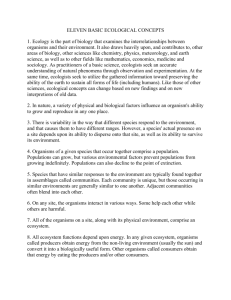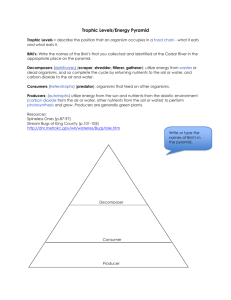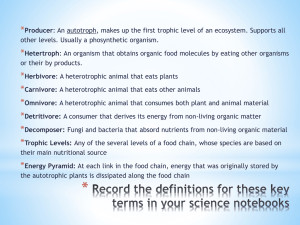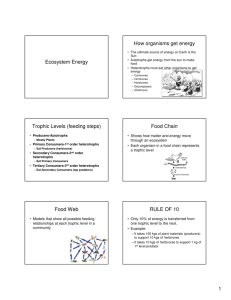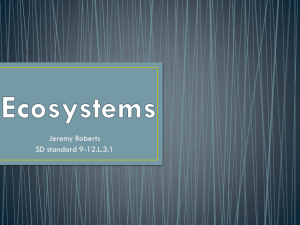Ecosystems Review Questions: Ecology Study Guide
advertisement
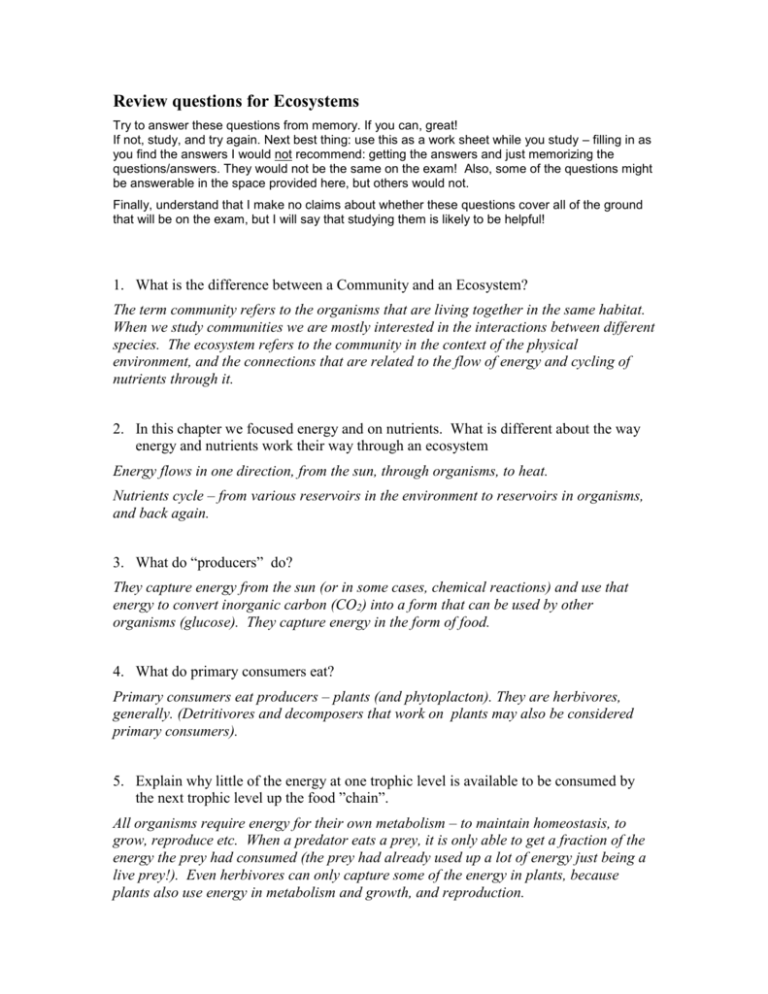
Review questions for Ecosystems Try to answer these questions from memory. If you can, great! If not, study, and try again. Next best thing: use this as a work sheet while you study – filling in as you find the answers I would not recommend: getting the answers and just memorizing the questions/answers. They would not be the same on the exam! Also, some of the questions might be answerable in the space provided here, but others would not. Finally, understand that I make no claims about whether these questions cover all of the ground that will be on the exam, but I will say that studying them is likely to be helpful! 1. What is the difference between a Community and an Ecosystem? The term community refers to the organisms that are living together in the same habitat. When we study communities we are mostly interested in the interactions between different species. The ecosystem refers to the community in the context of the physical environment, and the connections that are related to the flow of energy and cycling of nutrients through it. 2. In this chapter we focused energy and on nutrients. What is different about the way energy and nutrients work their way through an ecosystem Energy flows in one direction, from the sun, through organisms, to heat. Nutrients cycle – from various reservoirs in the environment to reservoirs in organisms, and back again. 3. What do “producers” do? They capture energy from the sun (or in some cases, chemical reactions) and use that energy to convert inorganic carbon (CO2) into a form that can be used by other organisms (glucose). They capture energy in the form of food. 4. What do primary consumers eat? Primary consumers eat producers – plants (and phytoplacton). They are herbivores, generally. (Detritivores and decomposers that work on plants may also be considered primary consumers). 5. Explain why little of the energy at one trophic level is available to be consumed by the next trophic level up the food ”chain”. All organisms require energy for their own metabolism – to maintain homeostasis, to grow, reproduce etc. When a predator eats a prey, it is only able to get a fraction of the energy the prey had consumed (the prey had already used up a lot of energy just being a live prey!). Even herbivores can only capture some of the energy in plants, because plants also use energy in metabolism and growth, and reproduction.


